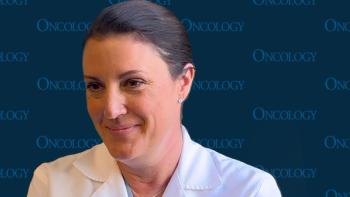
Guidelines Establish Minimum Negative Margins in DCIS
Three medical organizations including ASCO have issued a guideline on margins in breast conserving surgery for patients with ductal carcinoma in situ.
Three medical organizations including the American Society of Clinical Oncology (ASCO) have issued a guideline on margins in breast conserving surgery for patients with ductal carcinoma in situ (DCIS). The new recommendations are
The panel of experts from ASCO, the Society of Surgical Oncology (SSO), and the American Society for Radiation Oncology (ASTRO) recommend the use of 2-mm margins as a standard in breast conserving surgery for DCIS treated with whole-breast irradiation. Margins of 2 mm are “associated with low rates of ipsilateral breast tumor recurrence and has the potential to decrease re-excision rates, improve cosmetic outcome, and decrease health care costs,” wrote Monica Morrow, MD, of the department of surgery at the Memorial Sloan Kettering Cancer Center in New York, and coauthors. “Clinical judgment should be used in determining the need for further surgery in patients with negative margins less than 2 mm. Margins more widely clear than 2 mm do not further reduce the rates of recurrence of cancer in the breast and their routine use is not supported by evidence.”
The panel of experts, including researchers, clinicians, as well as a patient advocate based their consensus recommendations on margin width and ipsilateral breast tumor recurrence data from 20 published studies that included 7,883 patients and 865 ipsilateral breast tumor recurrences. All but two of the studies are observational, retrospective analyses.
Rather than simply recommending no ink on the tumor, the panel’s 2-mm margin recommendation was based on the statistically significant decrease in ipsilateral breast tumor recurrence with 2 mm compared to 0–1 mm (odds ratio, 0.51, P = .01).
Prior to the guideline, there was no expert consensus on the optimal negative margin width in breast conserving surgery for DCIS. According to the guideline authors, this lack of a clear consensus results in a 33% re-excision rate for women with DCIS undergoing surgery-contributing to patient morbidity and increased healthcare costs.
The panel’s strong and moderate recommendations for DCIS are:
1. A positive margin, defined as ink on DCIS, is associated with a significant increase in ipsilateral breast tumor recurrence; this increased risk is not nullified by the use of whole-breast irradiation.
2. A) Margins of at least 2 mm are associated with a reduced risk of ipsilateral breast tumor recurrence relative to narrower negative margin widths in patients receiving whole-breast irradiation; B) the routine practice of obtaining negative margin widths wider than 2 mm is not supported by the evidence.
3. Treatment with excision alone, regardless of margin width, is associated with substantially higher rates of ipsilateral breast tumor recurrence than treatment with excision and whole-breast irradiation (even in predefined low-risk patients).
4. The optimal margin width for treatment with excision alone is unknown, but should be at least 2 mm. Some evidence suggests lower rates of ipsilateral breast tumor recurrence with margin widths wider than 2 mm.
The guideline, noted the authors, are specific for patients with DCIS or DCIS with microinvasion treated with whole-breast irradiation and should not be applied to those patients with DCIS treated with accelerated partial breast irradiation or those with invasive carcinoma, for whom there is a separate guideline.
Newsletter
Stay up to date on recent advances in the multidisciplinary approach to cancer.


















































































